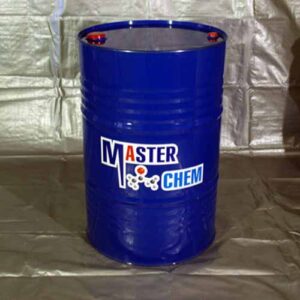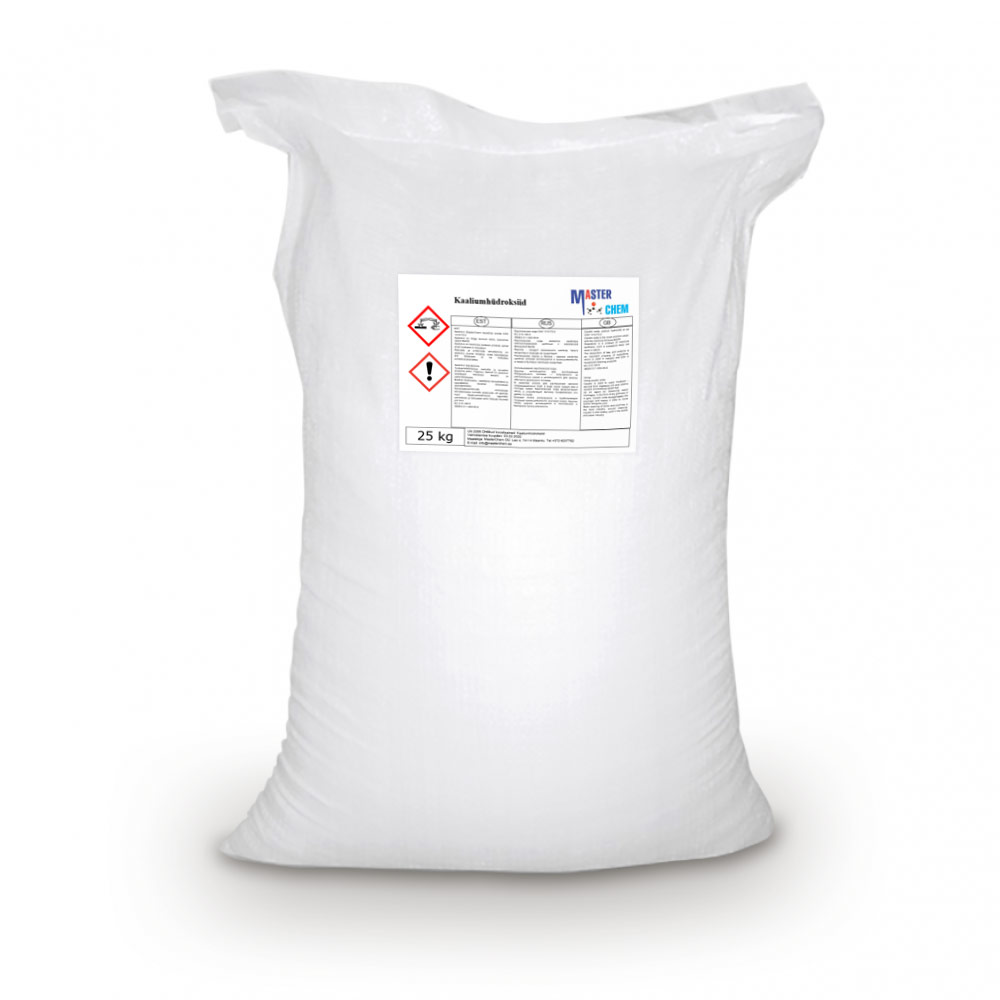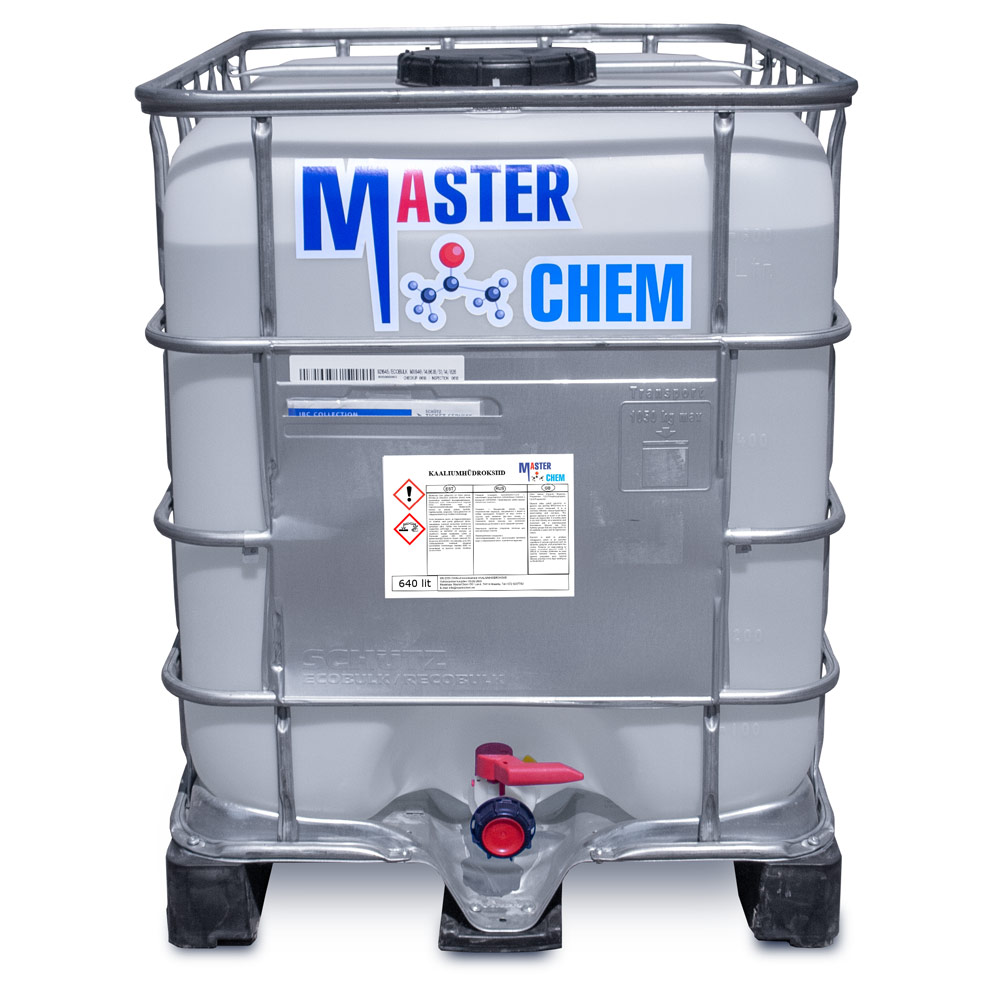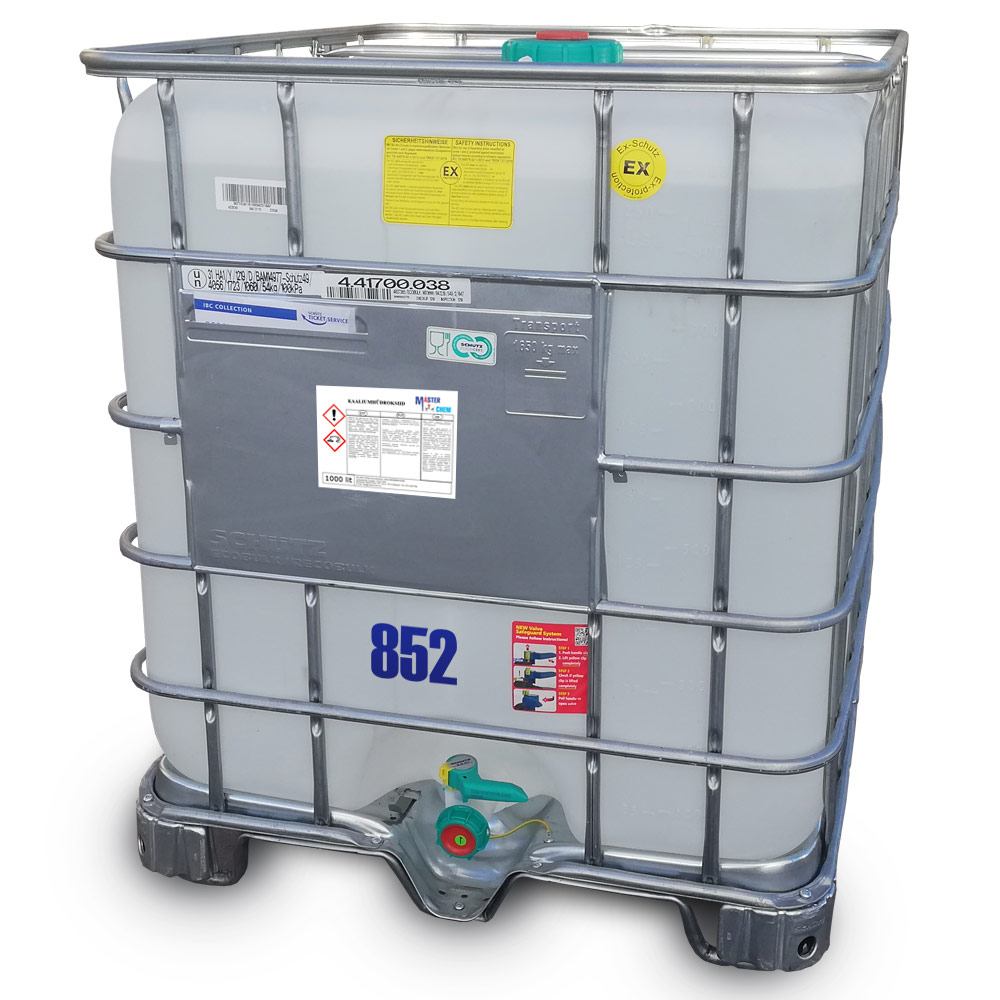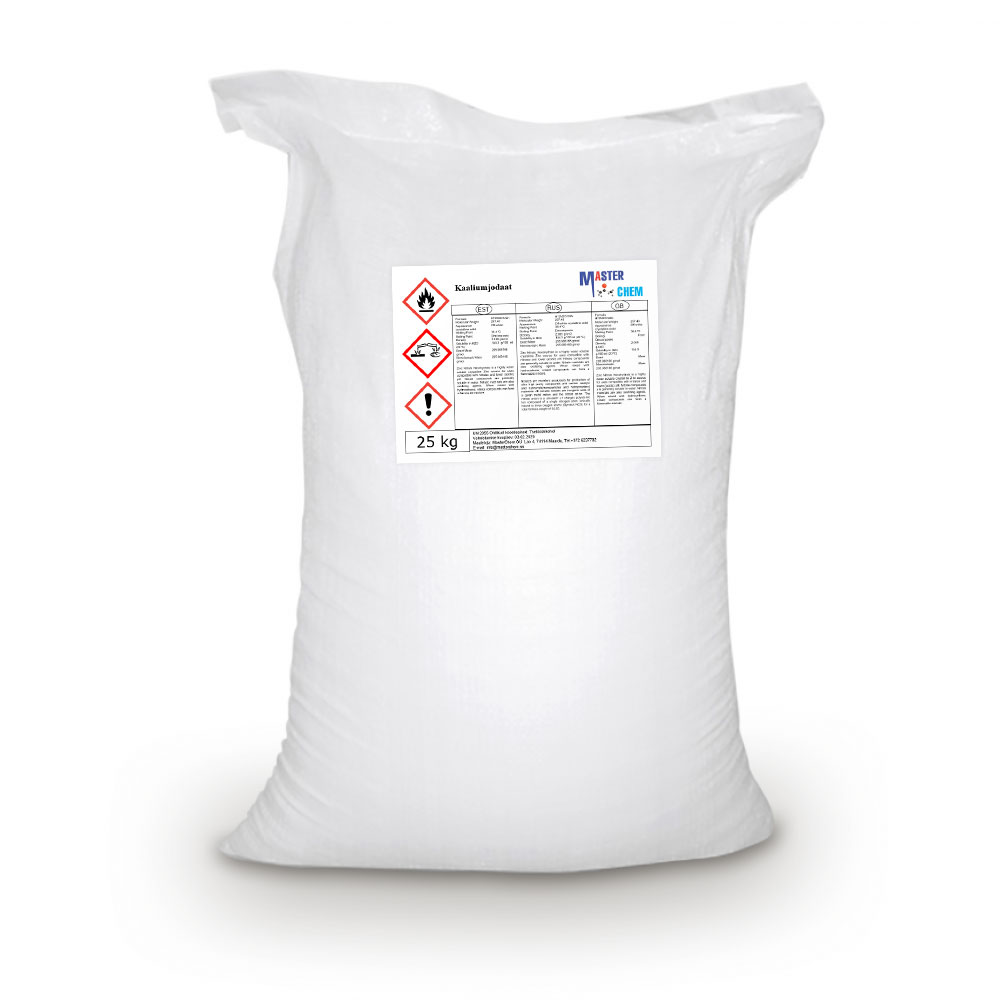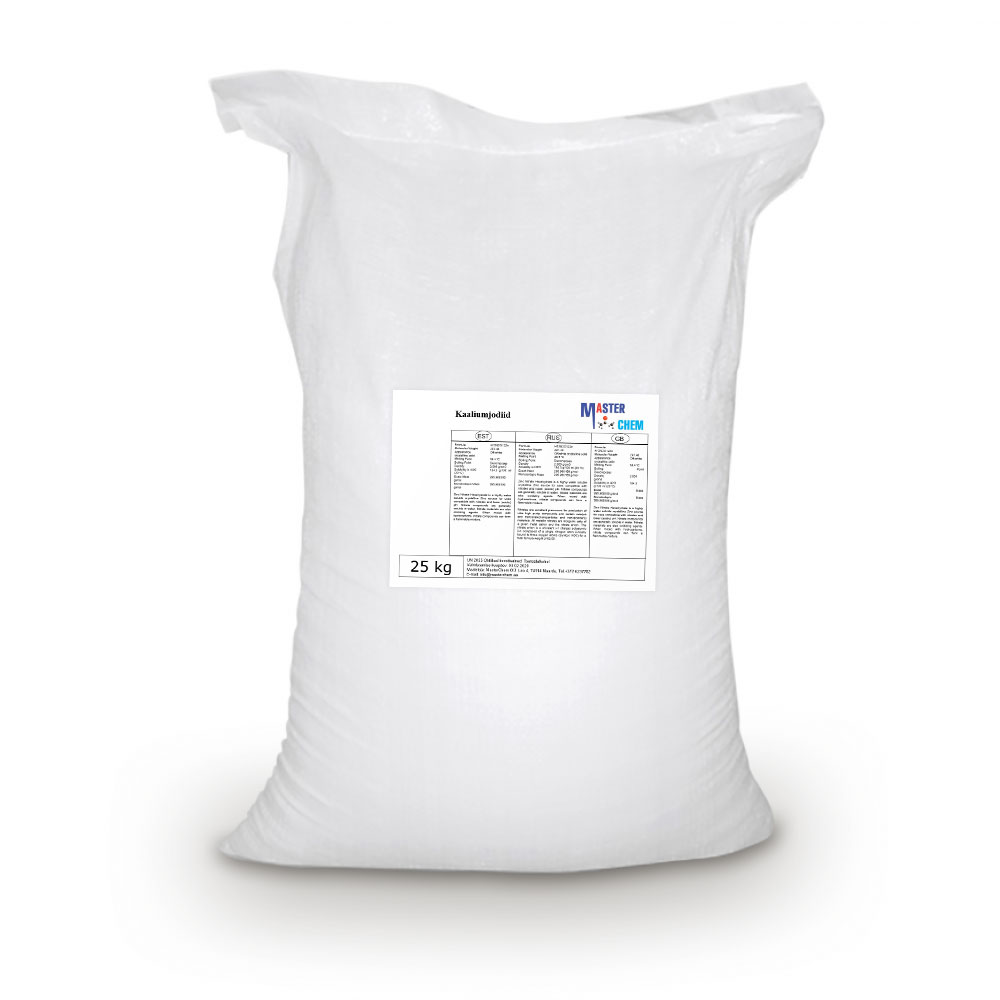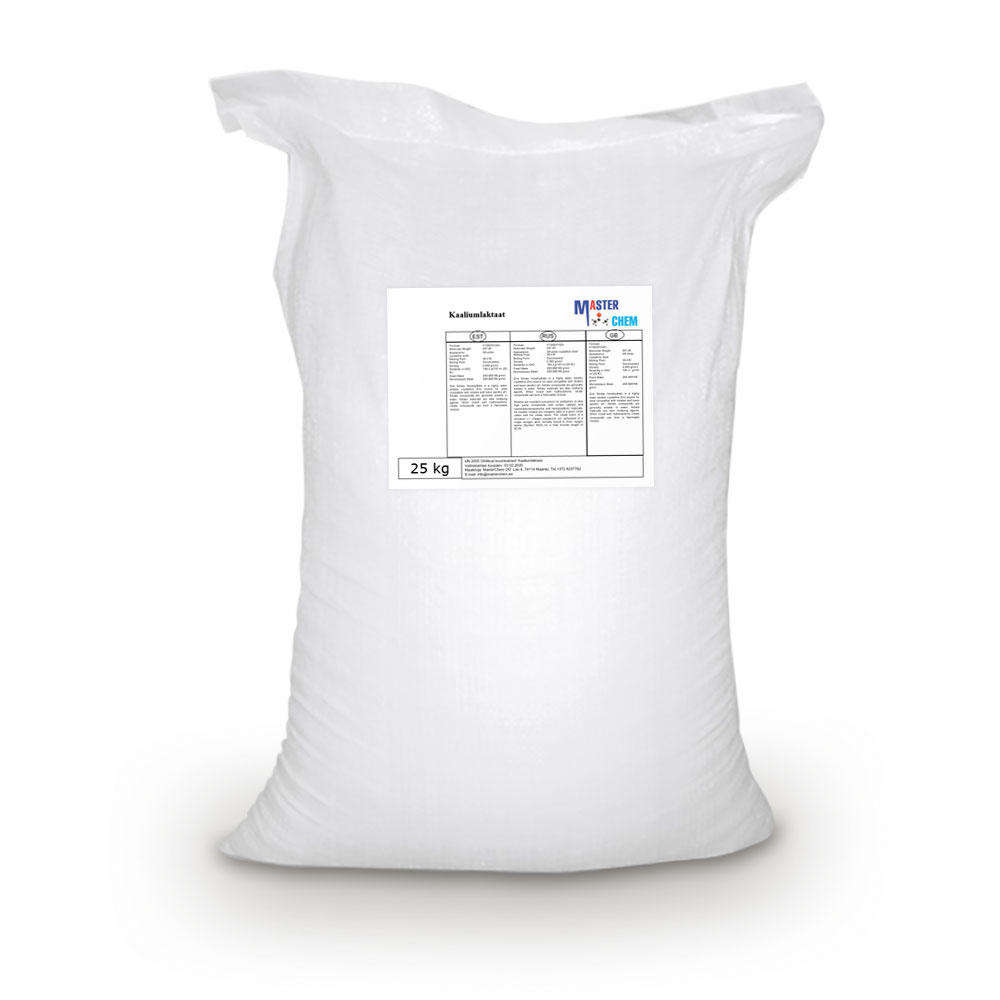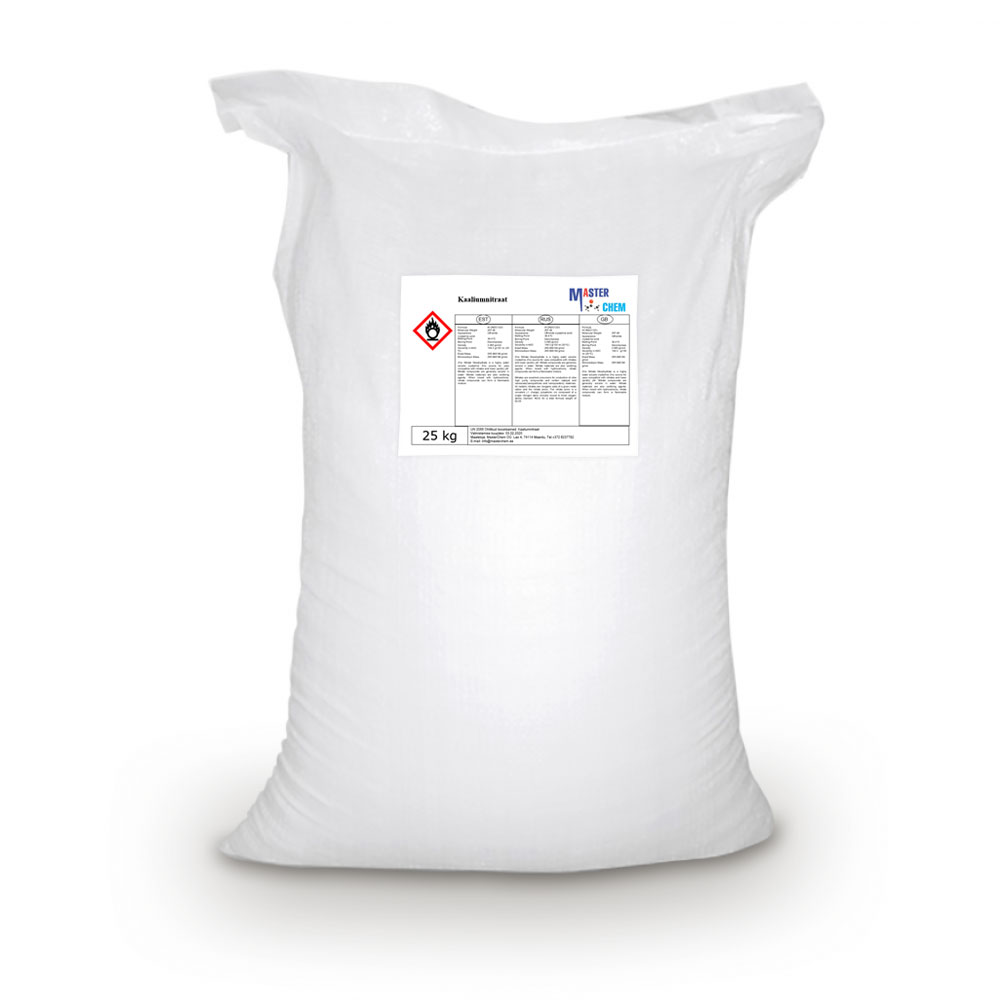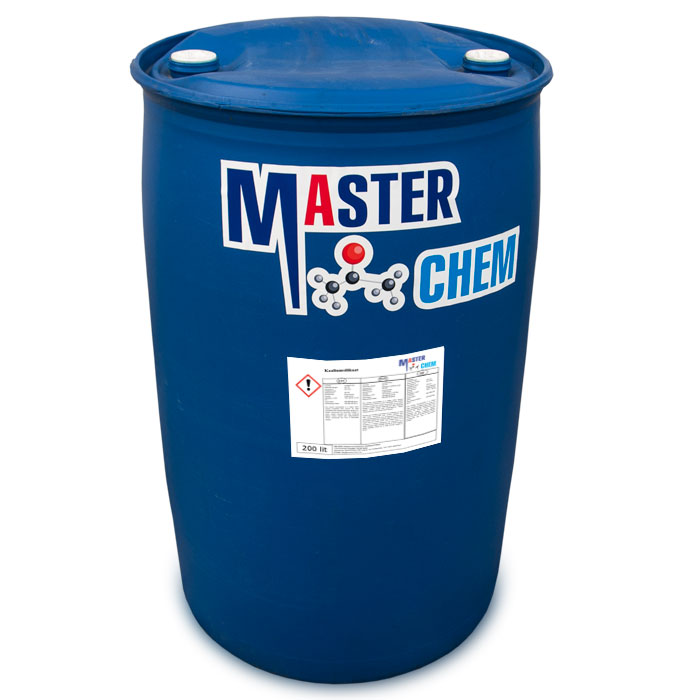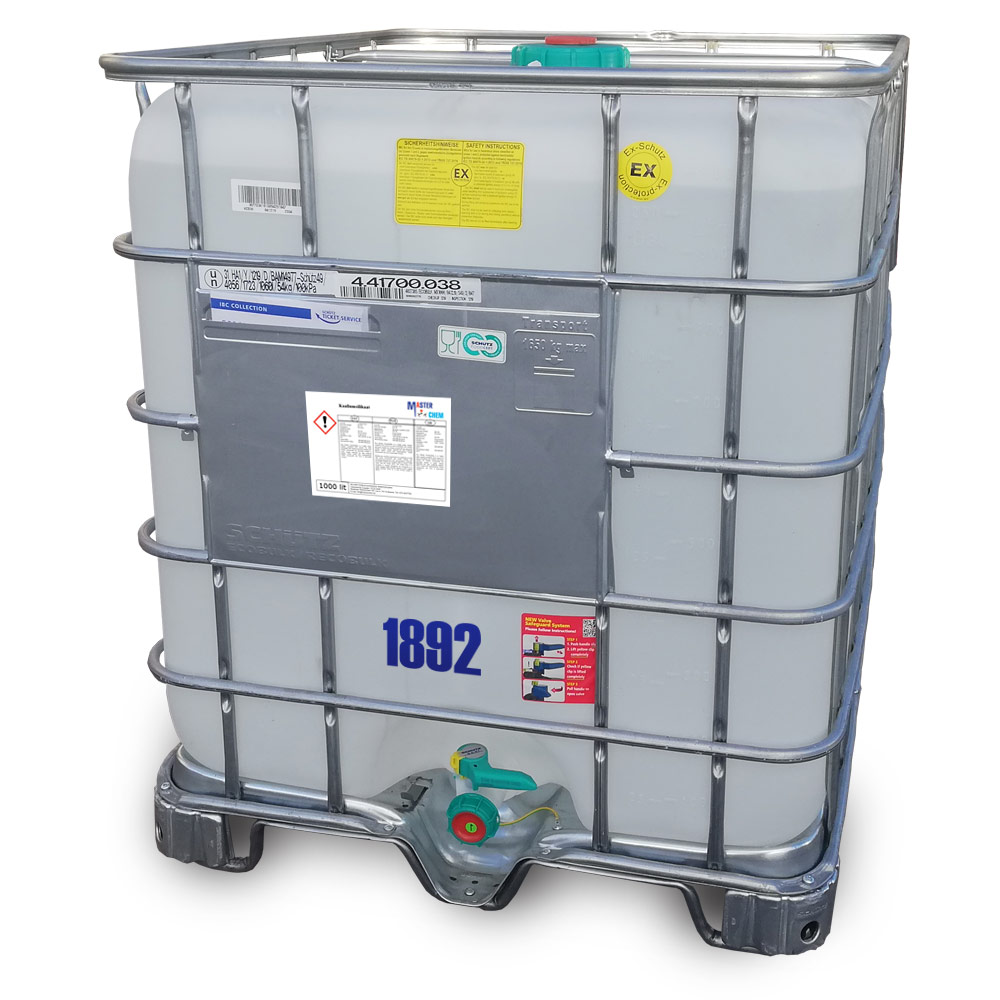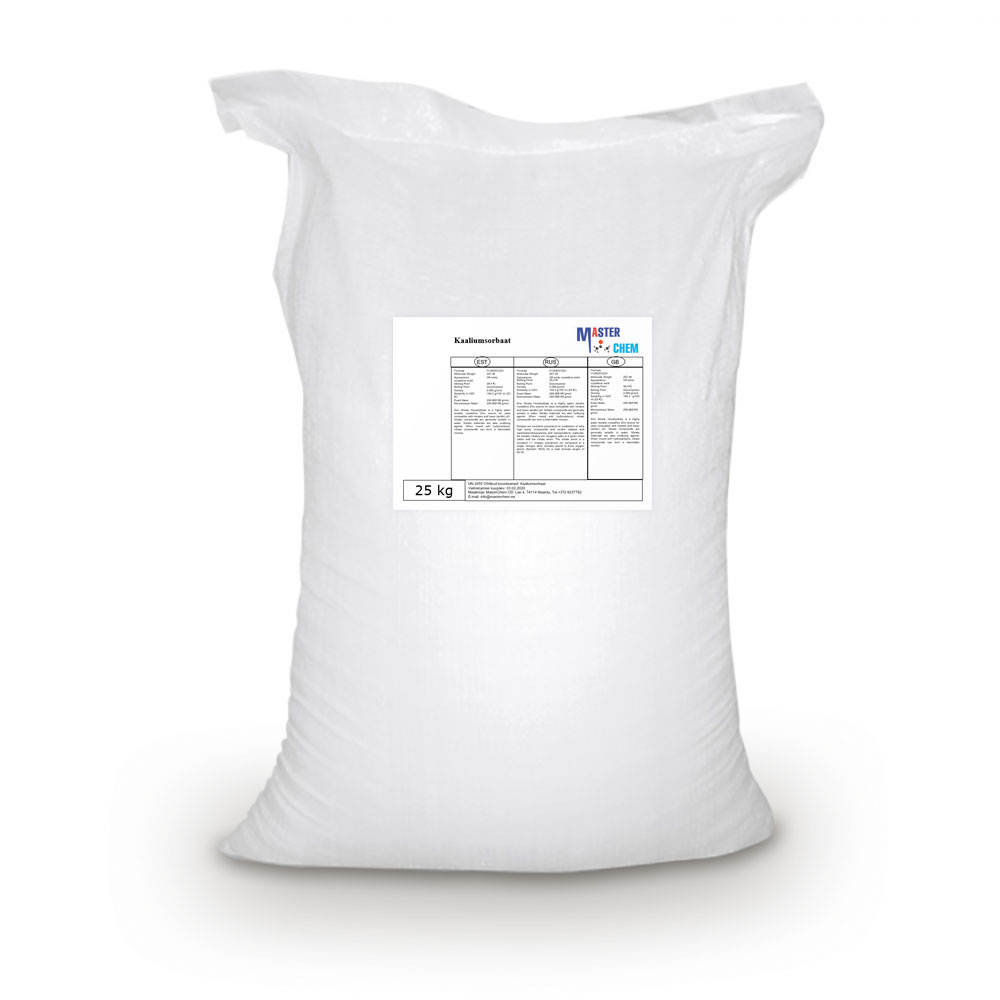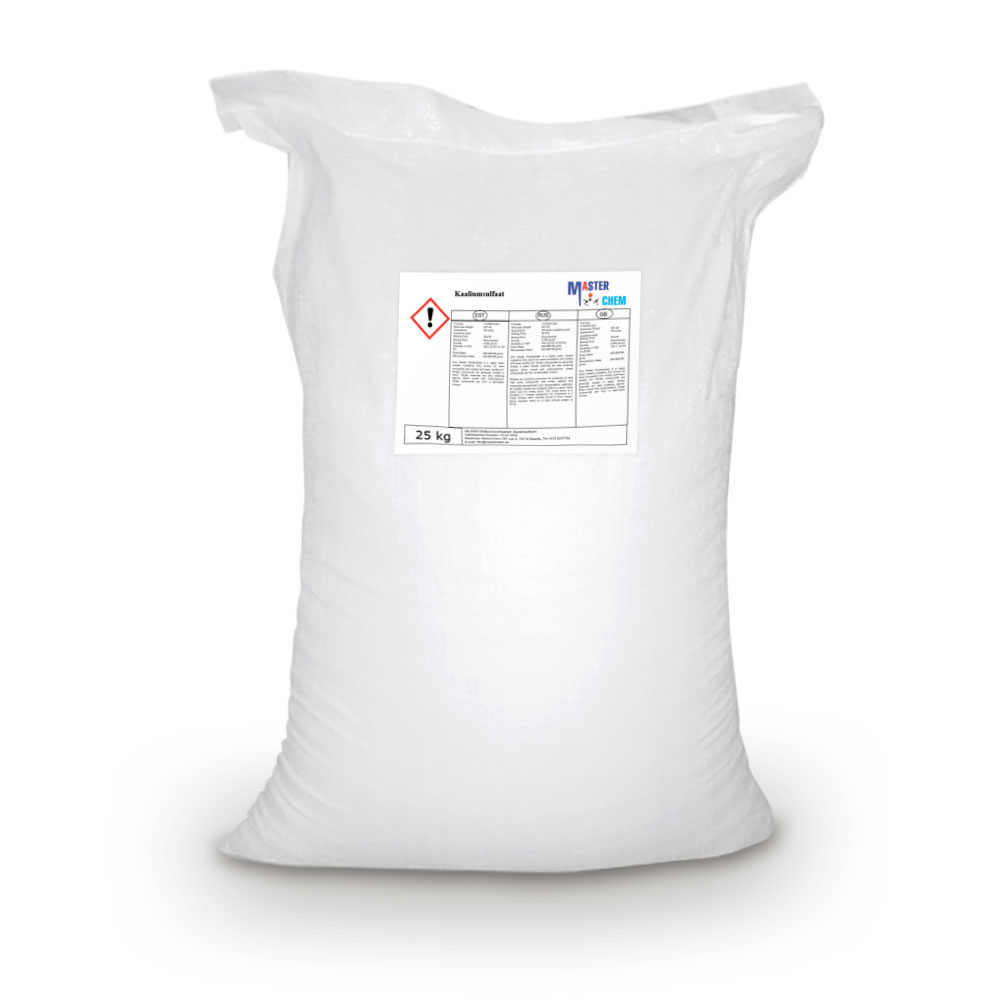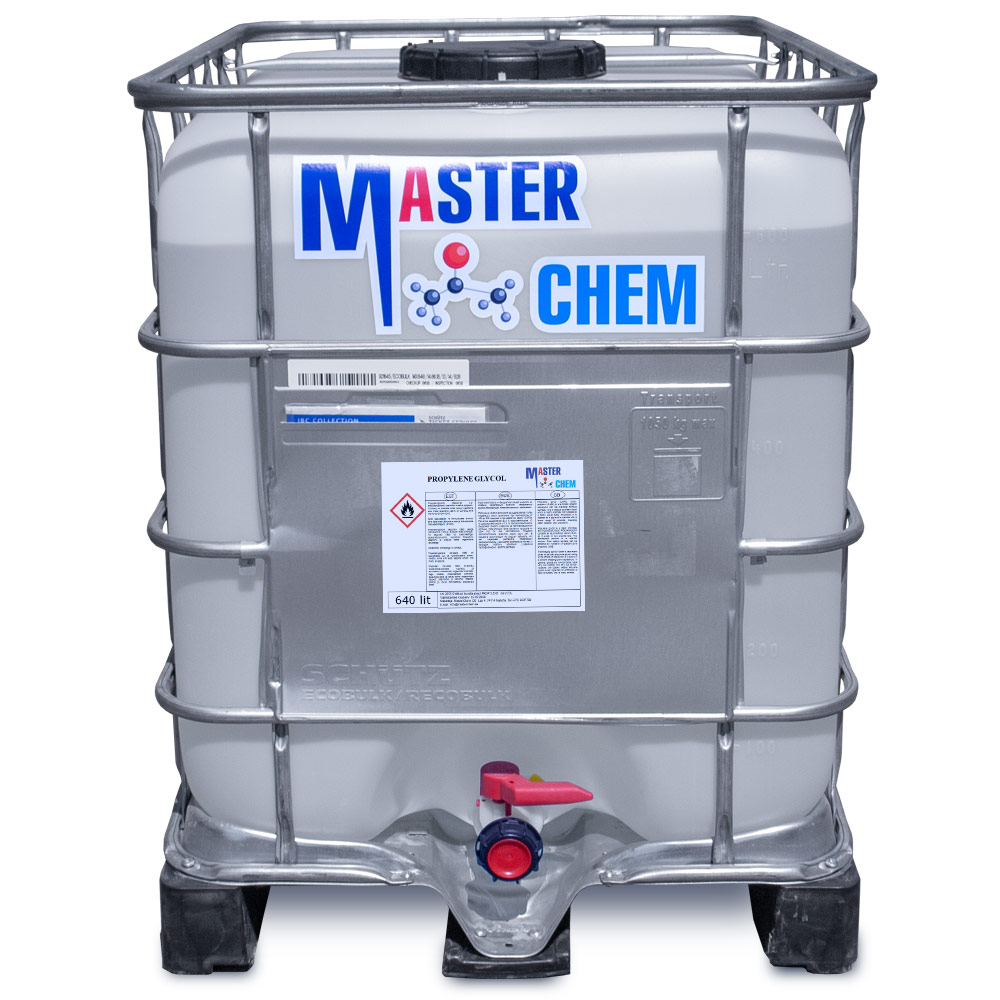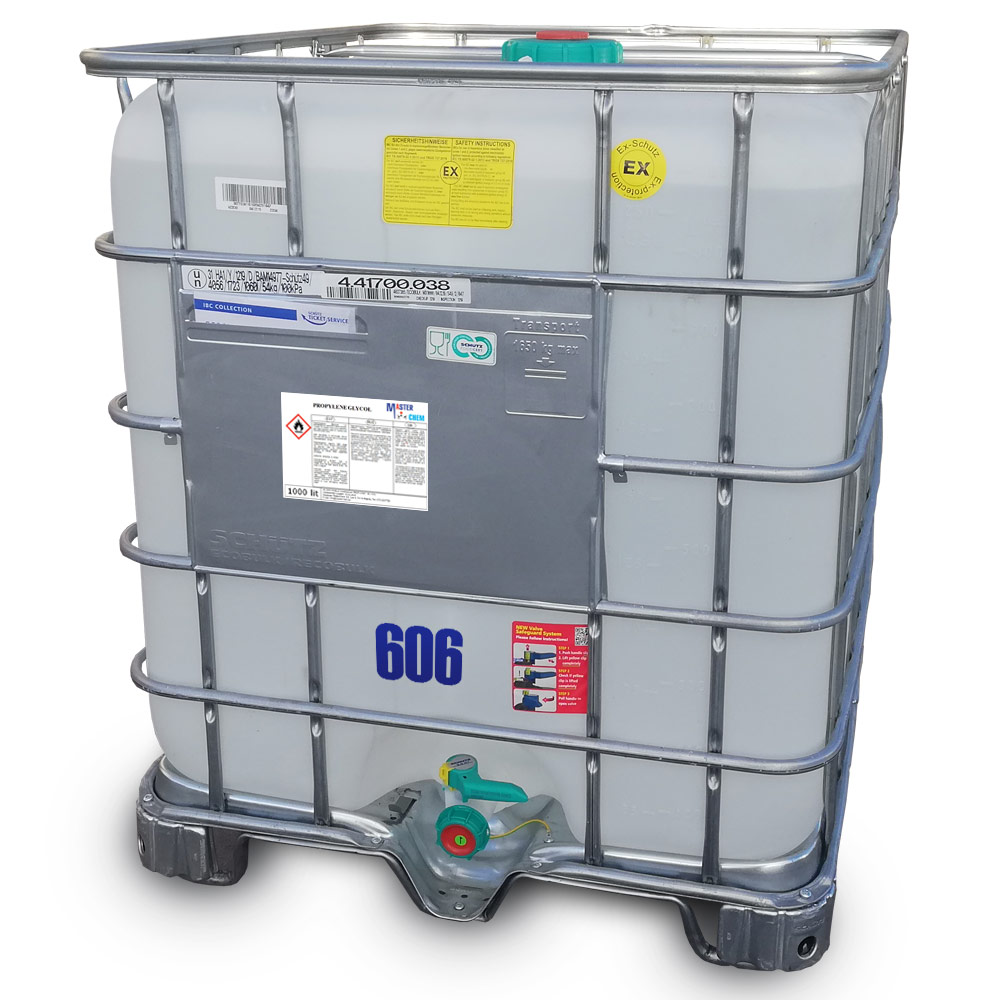Total: €60.00
Potassium hydroxide (flakes) (CAS 1310-58-3)
Potassium hydroxide, Lye, Custic potash, KOH
Potassium hydroxide, also known as lye is an inorganic compound with the chemical formula KOH. Also commonly referred to as caustic potash. It is used in various chemical, industrial and manufacturing applications. Potassium hydroxide is also a precursor to other potassium compounds. Potassium hydroxide is used in food to adjust pH, as a stabilizer, and as a thickening agent.
In addition to the above uses, potassium hydroxide is also used in making soap, as an electrolyte in alkaline batteries and in electroplating, lithography, and paint and varnish removers. Liquid drain cleaners contain 25 to 36% of potassium hydroxide.
Potassium hydroxide (flakes/pears) (CAS 1310-58-3)
Potassium hydroxide is an inorganic compound with the formula KOH, and is commonly called caustic potash.
Along with sodium hydroxide (NaOH), this colorless solid is a prototypical strong base. It has many industrial and niche applications, most of which exploit its caustic nature and its reactivity toward acids. An estimated 700,000 to 800,000 tonnes were produced in 2005. KOH is noteworthy as the precursor to most soft and liquid soaps, as well as numerous potassium-containing chemicals. It is a white solid that is dangerously corrosive. Most commercial samples are ca. 90% pure, the remainder being water and carbonates.
CAS: 1310-58-3
Potassium Iodate (CAS 7758-05-6)
Potassium Iodate (CAS 7758-05-6)
Potassium iodate (KIO3) is an ionic chemical compound consisting of K+ ions and IO3− ions in a 1:1 ratio.
Potassium iodate is sometimes used for iodination of table salt to prevent iodine deficiency. Because iodide can be oxidized to iodine by molecular oxygen under wet conditions, US companies add thiosulfates or other antioxidants to the potassium iodide. In other countries, potassium iodate is used as a source for dietary iodine. It is also an ingredient in some baby formula milk.
Like potassium bromate, potassium iodate is occasionally used as a maturing agent in baking.
Potassium Iodide (CAS 7681-11-0)
Potassium Iodide (CAS 7681-11-0)
Potassium iodide is a chemical compound, medication, and dietary supplement. As a medication it is used to treat hyperthyroidism, in radiation emergencies, and to protect the thyroid gland when certain types of radiopharmaceuticals are used. In the developing world it is also used to treat skin sporotrichosis and phycomycosis. As a supplement it is used in those who have low intake of iodine in the diet. It is given by mouth.
Common side effects include vomiting, diarrhea, abdominal pain, rash, and swelling of the salivary glands. Other side effects include allergic reactions, headache, goitre, and depression. While use during pregnancy may harm the baby, its use is still recommended in radiation emergencies. Potassium iodide has the chemical formula KI. Commercially it is made by mixing potassium hydroxide with iodine.
Potassium iodide has been used medically since at least 1820. It is on the World Health Organization’s List of Essential Medicines. Potassium iodide is available as a generic medication and over the counter. Potassium iodide is also used for the iodization of salt.
Potassium lactate (CAS 85895-78-9)
Potassium lactate (CAS 85895-78-9) 25kg MasterChem
Potassium L(+)-lactate is the potassium salt of L(+)-lactic acid, obtained by neutralisation of the acid of natural origin with a high purity potassium source. Lactate is produced naturally by living organisms as a by-product of the glycolysis. Potassium L(+)-lactate is used in food as a sodium free pathogen control agent and humectant. As an alternative to sodium lactate, it addresses the concerns of health organisations and consumers about reducing sodium intake.
Potassium nitrate (CAS 7757-79-1)
Potassium nitrate (CAS 7757-79-1)
Potassium nitrate is a chemical compound with the chemical formula KNO3. It is an ionic salt of potassium ions K+ and nitrate ions NO3−, and is therefore an alkali metal nitrate. It occurs in nature as a mineral, niter (or nitre in the UK). It is a source of nitrogen, and nitrogen was named after niter. Potassium nitrate is one of several nitrogen-containing compounds collectively referred to as saltpetre (or saltpeter in North America).
Major uses of potassium nitrate are in fertilizers, tree stump removal, rocket propellants and fireworks. It is one of the major constituents of gunpowder (black powder). In processed meats, potassium nitrate reacts with hemoglobin and myoglobin generating a blue color.
Potassium Phosphite (CAS 13977-65-6)
Potassium Phosphite (CAS 13977-65-6)
Monopotassium phosphite is an inorganic compound with the formula KH2PO3. A compositionally related compound has the formula H3PO3.2(KH2PO3). Both are white solids that consist of salts of the phosphite anion H2PO3−, the conjugate base of phosphorous acid.
Phosphites of potassium are used as fungicides (in a loose sense) in agriculture to combat water mold infection. Confusingly, they have also been marketed as fertilizers to avoid a regulatory burden. While perfectly capable to supply potassium to the plant, the phorphorus in phosphite form is unavailable to plants, and may even inhibit the uptake of the normal phosphate form if used in excess.
Potassium silicate (CAS 1312-76-1)
Potassium silicate (CAS 1312-76-1)
Potassium silicate is the name for a family of inorganic compounds. The most common potassium silicate has the formula K2SiO3, samples of which contain varying amounts of water. These are white solids or colorless solutions.
Some metal cleaning formulations use potassium silicate, which also serves as a corrosion inhibitor. It also finds various uses in the fabrication of welding rods or even of cosmetics.
Potassium sorbate (CAS 24634-61-5)
Potassium sorbate (CAS 24634-61-5)
Potassium sorbate is the potassium salt of sorbic acid, chemical formula CH3CH=CH−CH=CH−CO2K. It is a white salt that is very soluble in water (58.2% at 20 °C). It is primarily used as a food preservative (E number 202). Potassium sorbate is effective in a variety of applications including food, wine, and personal-care products. While sorbic acid occurs naturally in some berries, virtually all of the world’s supply of sorbic acid, from which potassium sorbate is derived, is manufactured synthetically.
Potassium sulphate (CAS 7778-80-5)
Potassium sulphate (CAS 7778-80-5)
Potassium sulfate (US) or potassium sulphate (UK), also called sulphate of potash (SOP), arcanite, or archaically potash of sulfur, is the inorganic compound with formula K2SO4, a white water-soluble solid. It is commonly used in fertilizers, providing both potassium and sulfur.
The dominant use of potassium sulfate is as a fertilizer. K2SO4 does not contain chloride, which can be harmful to some crops. Potassium sulfate is preferred for these crops, which include tobacco and some fruits and vegetables. Crops that are less sensitive may still require potassium sulfate for optimal growth if the soil accumulates chloride from irrigation water.
The crude salt is also used occasionally in the manufacture of glass. Potassium sulfate is also used as a flash reducer in artillery propellant charges. It reduces muzzle flash, flareback and blast overpressure. It is sometimes used as an alternative blast media similar to soda in soda blasting as it is harder and similarly water-soluble. Potassium sulfate can also be used in pyrotechnics in combination with potassium nitrate to generate a purple flame.
Propionic acid (CAS 79-09-4)
Propionic acid (CAS 79-09-4)
Propionic acid (/proʊpiˈɒnɪk/, from the Greek words protos, meaning “first”, and pion, meaning “fat”; also known as propanoic acid) is a naturally occurring carboxylic acid with chemical formula CH3CH2CO2H. It is a liquid with a pungent and unpleasant smell somewhat resembling body odor. The anion CH3CH2CO2− as well as the salts and esters of propionic acid are known as propionates or propanoates.
Propylene glycol (CAS 57-55-6)
Other names: α-Propylene glycol, 1,2-Propanediol, 1,2-Dihydroxypropane, Methyl ethyl glycol (MEG), Methylethylene glycol
Propylene glycol (IUPAC name: propane-1,2-diol) is a synthetic organic compound with the chemical formula C3H8O2. It is a viscous colorless liquid which is nearly odorless but possesses a faintly sweet taste. Chemically it is classed as a diol and is miscible with a broad range of solvents, including water, acetone, and chloroform.
CAS: 57-55-6

